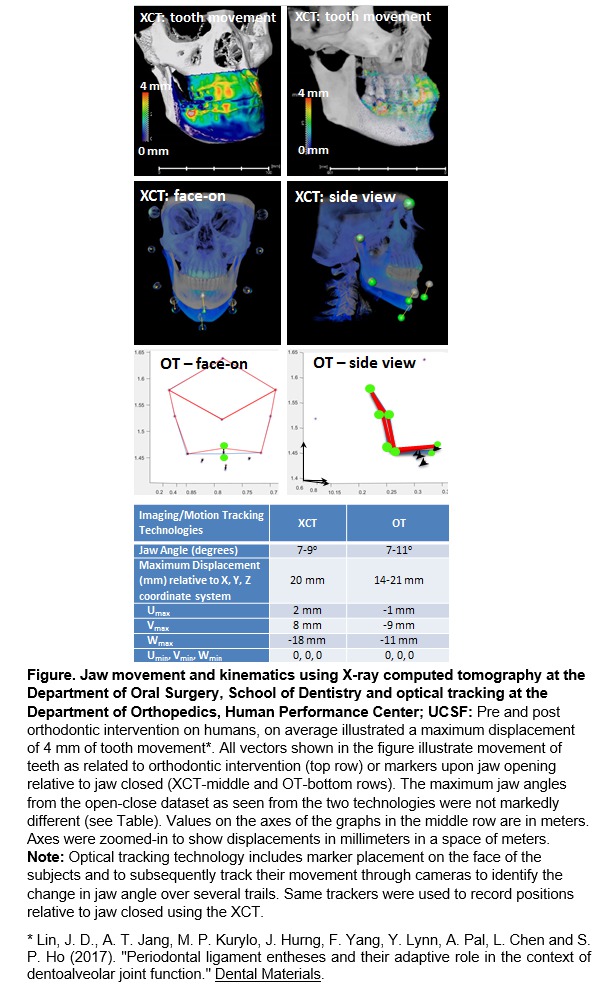IADR Abstract Archives
Correlating Jaw and Tooth Movements using Optical Tracking and X-ray CT Technologies
Objectives: Orthodontic forces result in interdigitation of maxillary and mandibular teeth. It is hypothesized that tooth movement can alter the overall biomechanical function of the oral masticatory complex including the biomechanics of the temporomandibular joint (TMJ). The objective of this study is to compare and contrast displacements as detected by X-ray computed tomography (XCT; short and large range motions depending on the field of view) and optical tracking (OT; large range motion) of jaw motion within the context of tooth movement as related to orthodontic intervention.
Methods: Four human subjects between ages 18 and 50 were chosen to map jaw opening and closing within functional limits using OT and XCT, and resulting datasets were compared. The changes in positions of the optical markers were tracked by using line segments that best represented jaw position before and after jaw opening. Ranges in degrees of freedom as related to both technologies were compared.
Results: Pre- and post-orthodontic intervention on humans, on average illustrated a maximum displacement of 4 mm of tooth movement. All vectors shown in the following figure illustrate the movement of teeth as related to orthodontic intervention (top row) or markers upon jaw opening relative to jaw closed (XCT-middle and OT-bottom rows). The maximum jaw angle and translations of the jaw from the open-close dataset as seen from the two technologies were not markedly different (see Table).
Conclusions: Displacement was positively correlated to jaw angle in both XCT and OT respectively. The range of displacements and angles as measured using XCT and OT were positively correlated. These data highlight the relative accuracy of motion capture when calibrated relative to XCT. Orthodontic tooth movement when correlated with net loss or gain in degrees of freedom as measured with OT following orthodontic intervention will allow us to estimate the effects of the treatment on the TMJ.
Methods: Four human subjects between ages 18 and 50 were chosen to map jaw opening and closing within functional limits using OT and XCT, and resulting datasets were compared. The changes in positions of the optical markers were tracked by using line segments that best represented jaw position before and after jaw opening. Ranges in degrees of freedom as related to both technologies were compared.
Results: Pre- and post-orthodontic intervention on humans, on average illustrated a maximum displacement of 4 mm of tooth movement. All vectors shown in the following figure illustrate the movement of teeth as related to orthodontic intervention (top row) or markers upon jaw opening relative to jaw closed (XCT-middle and OT-bottom rows). The maximum jaw angle and translations of the jaw from the open-close dataset as seen from the two technologies were not markedly different (see Table).
Conclusions: Displacement was positively correlated to jaw angle in both XCT and OT respectively. The range of displacements and angles as measured using XCT and OT were positively correlated. These data highlight the relative accuracy of motion capture when calibrated relative to XCT. Orthodontic tooth movement when correlated with net loss or gain in degrees of freedom as measured with OT following orthodontic intervention will allow us to estimate the effects of the treatment on the TMJ.

